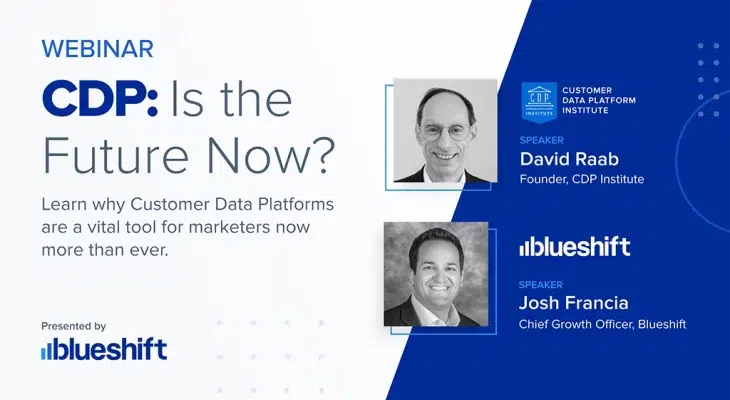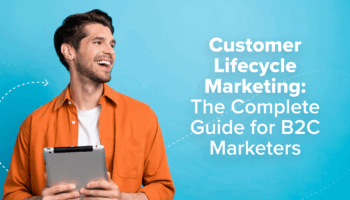According to the CDP Institute, a CDP is a packaged software that builds a unified, persistent customer database that’s accessible to other systems. A CDP is something you buy, not something you build (like a data warehouse or data lake). It takes data from all different sources and unifies it in its own data store. A CDP is designed to share data with other systems and gives companies the flexibility to decide how they want to use that data.
“CDPs are built to be flexible; they’re built to be scalable and adjust to your business as your business changes.” – Josh Francia, Chief Growth Officer, Blueshift
There are five primary types of CDPs:
- Data CDP – CDPs that only build a unified, persistent database.
- Analytics CDP – CDPs that build a database and have an analytical capability (usually predictive recommendations or sometimes attribution).
- Campaign CDP – CDPs with the capabilities of both a Data CDP and an Analytics CDP, plus message selection.
- Delivery CDP – CDPs with all of the capabilities above, plus message delivery.
- Operational CDP – CDPs that are embedded in a larger system (e.g., an ecommerce system).
Among these definitions, Blueshift CDP falls into a more specific categorization — an Activation CDP — that encompasses a CDP with a greater scope of functionality and marketing automation capabilities. Activation CDPs are typically implemented by somewhat smaller companies or midsize companies who are more concerned about saving on integration costs, while enterprise companies generally have multiple platforms at their disposal for various marketing functions.
To expand on these concepts, David and Josh also dove into the differences between Activation CDPs and Customer Relationship Management systems (CRMs), Marketing Automation Platforms (MAPs), and Data Management Platforms (DMPs). For more information, check out the following blog posts:
Here’s one important note that David pointed out during his discussion with Josh: if marketers don’t know what they’re doing or don’t know how to take advantage of a CDP — or don’t take the time to learn how to use the system — they’re not going to get a lot of value out of it.



